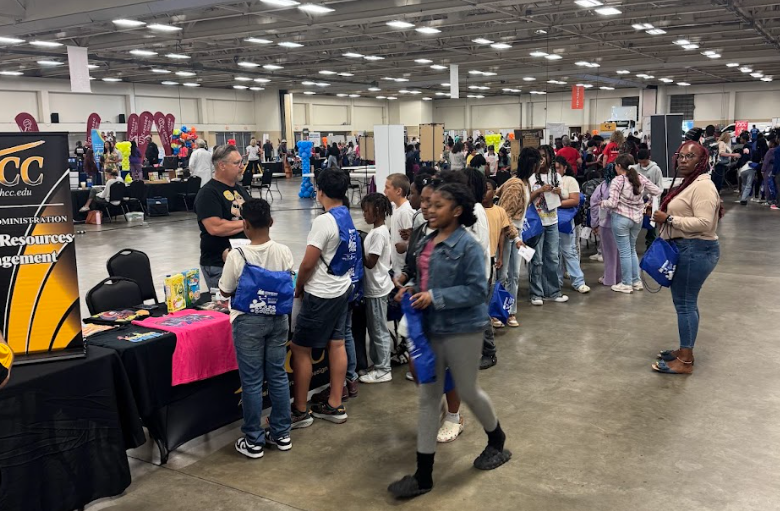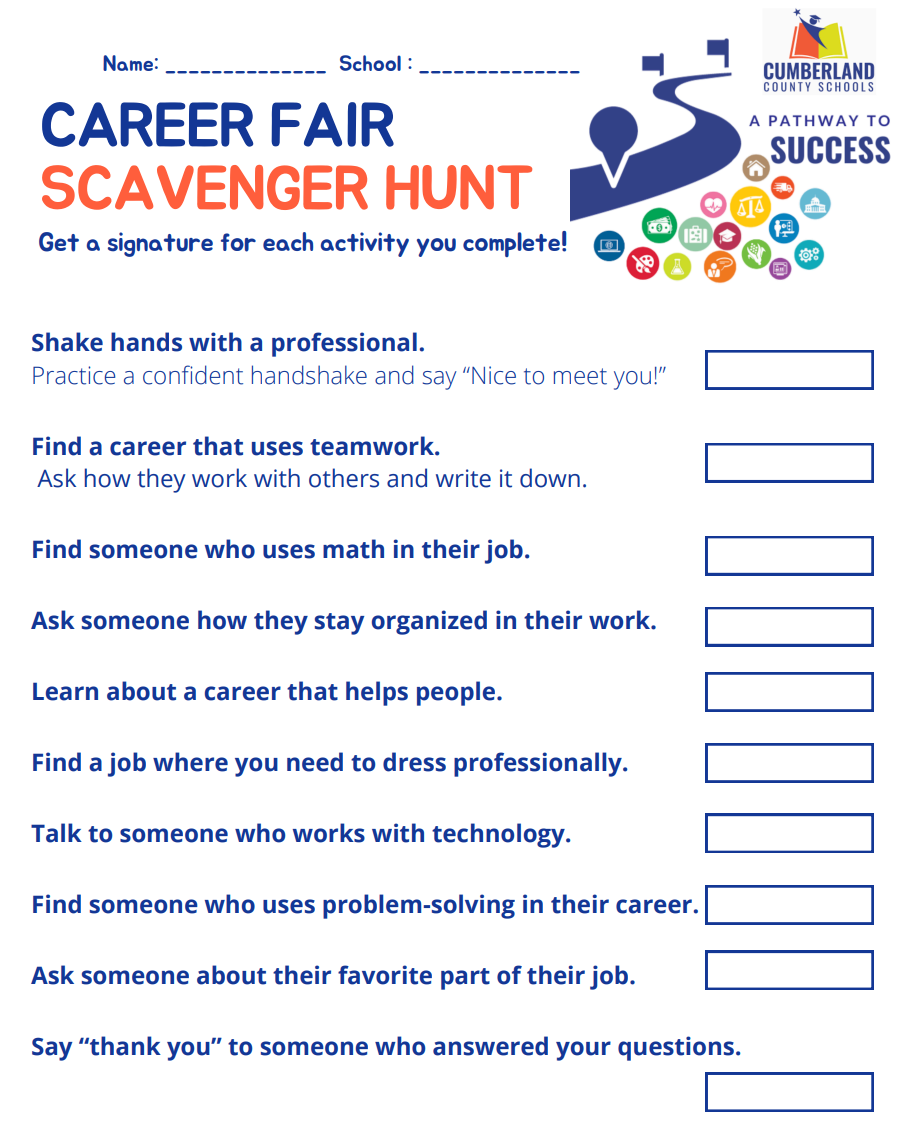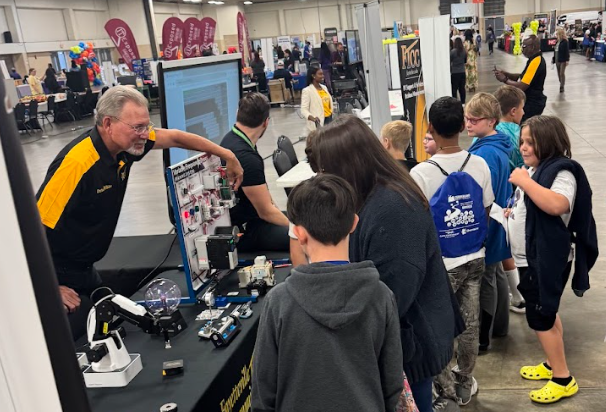Nine in 10 elementary students surveyed were aware of their interests, skills, abilities, personality traits, and strengths—considered a key step in career prep—in a 2022 study on career development needs. Nearly the same percentage of these students, in grades 3, 4, and 5, could name two or three careers that might be of interest. But more than half didn’t know, or were not sure, who could help them develop college and career readiness plans.
What should elementary educators do?
North Carolina is one state encouraging school districts to start career awareness activities with students in grade 5. A 2024 report found 64 districts had planned career fairs that welcomed nearly 250,000 fifth-graders in 2023-24, compared to 61 the year prior and 50 the year before that. More than 200,000 fifth-graders across the state had been exposed to some form of career and technical education (CTE) in 2023-24.
Cumberland County Schools, based in Fayetteville, is one district answering the call. Inviting grade 5 classes to the established annual CTE Career Pathway Fair meant potentially 4,000 additional individuals at the event, which had until this year just allowed middle and high schoolers to engage with local employers, educational institutions, and agencies to get a look at potential career paths.
Building A CTE Foundation

The 86-school district won a state grant a few years ago to fund a new position focused on expanding career exploration and exposure to the lower grades, says Chip Lucas, executive director of CCS Career and Technical Education. Initially that meant pushing in to the 50 elementary schools—helping with their own career fairs and bringing career exploration manipulatives to classrooms, for example.
Additional grants brought two more middle-grades career development coordinators into the fold, which has created opportunities for fifth-grade field trips to see the district’s career pathways programs in action.
The state support for earlier career exploration also allowed Cumberland administrators to purchase MajorClarity by Paper, their career development platform, for fifth graders rather than just older grades.
“We want students to start exploring early, but how can they do that? Career assessments and inventories, so they can decide their interests before they explore [careers],” says Lucas.
Every middle schooler also must have a Career Development Plan to be promoted to high school.
Meanwhile, district business partners expressed a need to reach students earlier, says Lucas. “We said, ‘Why don’t we just take on the big elephant and invite the fifth-graders to our career fair?”
Planning the Big(ger) Event

This April, nearly 3,000 students in grades 5 to 12 spent time at the 2025 CTE Career Pathway Fair at the county’s agri-expo center, participating in hands-on demos and one-on-one conversations with professionals representing the healthcare, public safety, agriculture, business, education, engineering, and technology industries, plus the trades. One popular high-tech display was the Beta Box mobile technology lab, where kids could fly drones and experiment with coding software, according to Lucas.
Forecasting a bigger event for up to 4,000 students with the addition of fifth grade began prior to holiday break, when Lucas’ team surveyed elementary principals to gauge interest, and ultimately opened the invitation to all, including any school that originally planned to stick with their own career exploration fair. In the end, nearly 1,600 fifth-graders attended.
The first hour after the ribbon-cutting was exclusively for these youngest students, who got some extra motivation and direction with a scavenger hunt challenge. Among the 10 activities:
- Shake hands with a professional.
- Find a career that uses teamwork.
- Talk to someone who works with technology.
- Ask someone about their favorite part of the job.

Lucas got handshake requests and saw how seriously students took the activity. He also had students take note of his clothing: While he was wearing a CTE t-shirt for the event, he had a jacket on hand that day for more professional moments, such as the ribbon-cutting.
Middle school students (also scavenger hunters) had the fair to themselves for the next two hours, and then vendors got a lunch break before spending the final 90 minutes with high schoolers.
“Typically, we’d be over and done by lunch hour,” Lucas says, adding that the longer day was necessary to accommodate the extra students. “We needed to balance the numbers.”
Reflecting and Evolving

Vendor feedback on the fair included praise for the youngest attendees. “They thought they had the best questions,” Lucas says. “It was very, very energetic with all those children in there. I think they set the tone for a really energetic day.”
A survey of principals confirmed the positive experience, and they’ve gotten save-the-date notices for 2026.
The planning for that may involve suggesting to vendors that they stagger tabletop freebies. “In some sense, [the fifth-graders] did wipe out all their swag,” Lucas says. And perhaps high school attendees need more opportunities for one-on-one talks with employers, or separate specific events for that.
Career development coordinators will push into elementary classrooms next year for focused career exploration. And on the high school side, apprenticeship programs and workforce development efforts will get more attention. As Lucas says, “It’s all part of the career development continuum, and we’re working that from both ends.”


